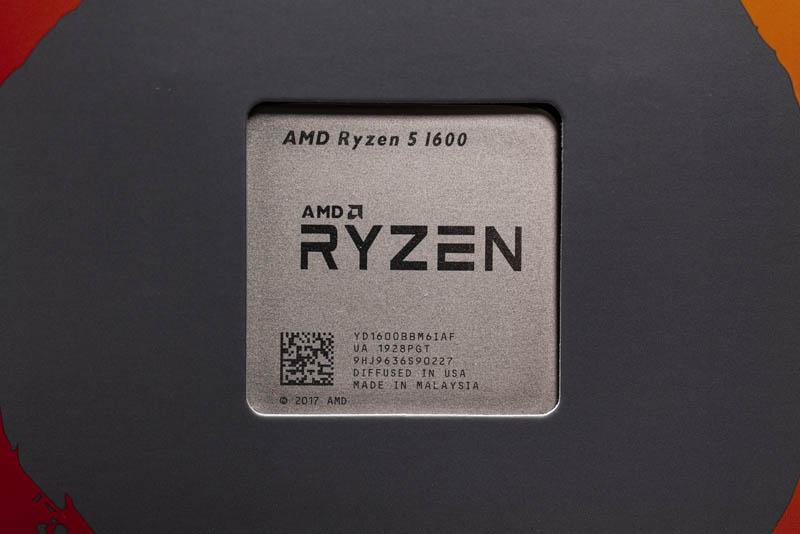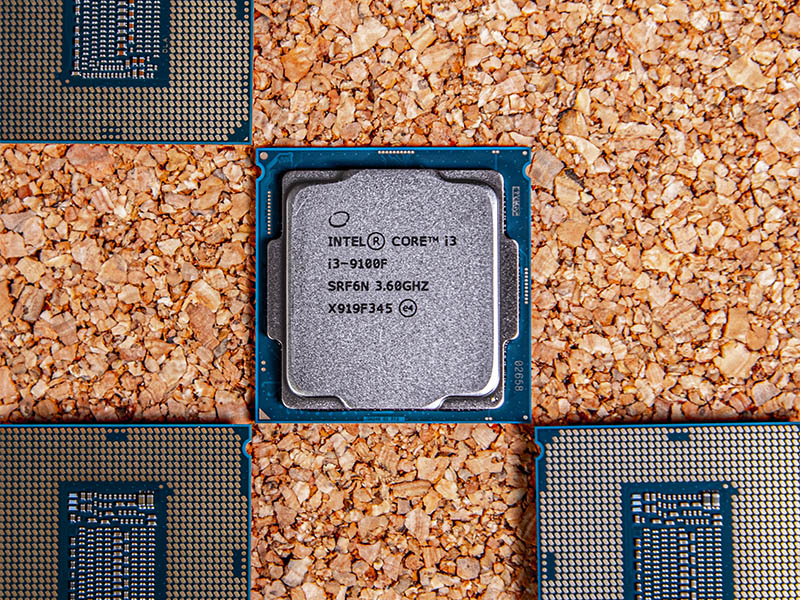AMD Ryzen 5 1600 AF Market Positioning
Thes chips are not released in a vacuum instead, they have competition on both the Intel and AMD sides. When you purchase a server and select a CPU, it is important to see the value of a platform versus its competitors.
AMD Ryzen 5 1600 AF v. AMD
As part of the process, we wanted to look at the “previous-gen” Ryzen 5 1600 as well as the current-gen Ryzen 5 3600.
On the previous-gen Ryzen 5 1600 side, one can see a fairly substantial and consistent delta between the older 14nm version and the newer 12nm version. At $85 for the 12nm AF version, it is very difficult to recommend the original. We wish that AMD just called this a Ryzen 5 2599 or something like that to differentiate the SKU. It is too confusing to have this “AF” distinction.

The AMD Ryzen 5 1600 AF is clearly no match for the newer Ryzen 5 3600 part. AMD has done a lot to differentiate its newest generation. When we look at the server platform that we are testing on, an AMD X470 solution, things are different than on the desktop side. One does not benefit from the X570’s PCIe Gen4 support nor the higher boost power levels consumer boards tend to use. ASRock Rack has an X570 version of this Ryzen server platform coming, but the chipset uses much more power. The X470 is a better match for the Ryzen 5 1600 AF price/ performance mix.
In our formal ASRock Rack X470 motherboard reviews, we are going to go into more detail on this, but the fact that one cannot buy a Ryzen server from Dell, HPE, Inspur, Lenovo, Supermicro, Cisco, Huawei, Quanta, Wiwynn, and other major vendors means that the support is very limited for an AMD Ryzen 5 1600 AF server solution. AMD has competitive parts, but it lacks the market focus.
AMD Ryzen 5 1600 AF v. Intel
The AMD Ryzen 5 1600 AF is actually an important case study in the market. It is a great example of where the silicon has relative feature parity (ECC UDIMM support) with the Intel Xeon E-2100 and Xeon E-2200 series. At the same time, almost every major manufacturer has multiple Xeon E solutions while almost none have Ryzen systems.
In our benchmarking section, we saw that the Ryzen 5 1600 AF performs very well. In the motherboard reviews, we will show the power consumption, but it is perhaps better than the Xeon E series on a performance per watt basis. At $85, it is simply faster than the Intel competition with the Intel Core i3-9100F even at a higher price. The issue with the Ryzen 5 1600 AF is not performance.

When major OEMs design servers, they expect a level of support from the vendor. When enterprise software customers purchase servers they expect that their servers are supported by the software vendor. For the Ryzen alternatives on the market right now, AMD’s lack of push to provide the server support in the Ryzen segment means few OEMs design servers for them, and none of the larger players at this point. Without servers from major partners such as Dell EMC, HPE, Inspur, and Lenovo, the software vendor communities do not expend resources to support Ryzen servers.
While AMD has the performance to compete with Intel, it is not investing in this Ryzen server ecosystem. If AMD ever did this, especially with Ryzen Pro, then Intel will have to get into the same competitive mode it is in the desktop and mainstream server markets.
Final Words
If you want a low-cost Linux box, then the Ryzen 5 1600 AF is truly a unique and interesting option. One can purchase the motherboard, and CPU with a heatsink for just over $300. Software vendor support may not be the best, but one can build a complete and usable server for under $500 which means potentially more performance at a lower cost than the HPE ProLiant MicroServer Gen10 Plus. One trades a smaller form factor with the HPE unit for more expandability and lower cost which many may find attractive as well.
From a performance perspective, in the $85 realm, this is a great value. The six cores and twelve threads with desktop-class clock speeds are great. We can see some highly cost-sensitive markets seeing this as the perfect solution.




John,
Why didn’t you include a Ryzen 5 2600 in the mix?
The 1600 AF is often likened to a 2600 from a performance point of view.
I’d like to have seen the 16c Ryzen. BinkyTo I don’t see the point of the 2600. The 1600AF is so close and the 3600 is newer and better at the price. Maybe for completeness but I can’t see buying a 2600 over a 1600AF or 3600.
BinkyTo and Nate77,
I am reviewing the X470D4U class boards, and ran the benchmarks for this article. The trio of CPUs we had available to us were the original 1600, the 1600 AF, and the 3600; the idea being to cover each of the three Zen generations and simply make sure all was well from a software compatibility standpoint. Performance can scale up (or down) with core count if you move away from the 6C solutions within any of the three generations of the Ryzen CPUs, so we wanted to make sure that all three generations were tested.
It’s a bit like iOS it’s not supported by the big server vendors such as Dell EMC, HPE, Inspur, and Lenovo and when your server workloads depends on vendors like Dell EMC, HPE, Inspur, Lenovo and Apple you know that your in deep sh*t. It’s a bit like when your IT depends on ORACLE. It’s a good thing that companies like AsRock, Gigabyte, Tyan, etc.. give us the opportunity to not be in the hands of corporate companies like the NSA and CIA(Cisco and Juniper) or Intel, Dell EMC, HPE, Inspur, Huawei, Lenovo, Apple etc.., with these big brands you are in certified sh*t.
Just completed a new build with E2246G. Software vendor support was main reason why I chose intel. Though I may consider a pfsense box with this CPU.
Gee whiz. If you were writing an article about a jellied eel, you’d still start the wrap up page with “These chips are not released in a vacuum instead, they have competition on both the Intel and AMD sides.”.
“ ASRock Rack has an X570 version of this Ryzen server platform coming, but the chipset uses much more power.”
So we’re getting a X570D4U soon? That’s the first I’ve heard of that.
Ramblinreck47 I think they’re talking about the X570D4I-2T which is the mITX x570 version https://www.asrockrack.com/general/productdetail.asp?Model=X570D4I-2T#Specifications
It isn’t the same, but it’s the successor in x570. I think mITX is better than mATX since it’ll fit more cases.
Personally I would build with a Ryzen 2700E if I could get something like that with integrated graphics. That is one of the reasons the E2176G and E2278G are so compelling, coupled with broad based support for Intel.
jingram, I eagerly await the desktop version of the Renoir 8-core CPU, since removing the need for the additional expense of a GPU should make the AMD solution much more compelling for business class workstations. Plus, assuming the desktop Renoir CPUs use the same die as their mobile counterparts (there is precedent for this in the previous generation APUs) then this future 8-core desktop APU will be a fully monolithic die, rather than chiplet based like the 3rd gen Ryzen 3000 desktop parts. This could result in slight upticks in performance even compared to non-APU processors thanks to reduced intra-die latency.
Very cool review. Obviously the lack of OEM support is going to be an important factor, but with performance and value like this, I hope product managers at OEMs are seriously looking at Ryzen solutions. This kind of media attention should hopefully raise awareness.
It will be interesting to see how this lines up with other sub-$100 AMD cpus like the Athlon 3000G and Ryzen 3 3100.
Ya’ll doing some great stuff STH. Keep at it.
Where do you find an AMD Ryzen 5 1600 AF sold or quoted at $85?
Domih, they are found on Amazon but go in and out of stock every few days.
Unfortunately the current price is almost $150. It would be a monster at the original price.
The price spikes are real. I believe our review unit was purchased for the $85 price around three weeks ago, and I personally purchased another in early April for $90, but they’ve been popular chips and the availability and pricing are suffering as a result.
Too bad these X470 asrock rack boards are unobtainium now
I was surprised to see this combination, the 1600 isn’t on the QVL for ASRock. The CPU I’d like to see is the new ryzen 3300. The low tdp and performance looks promising.
Great review and really, really useful. I’m done my math for such configuration, it is also very useful to have all that CPUs compared on one place. Thanks!
Mike B,
The 1600AF isn’t on the QVL, but the 2600 is and they are essentially the same chip. Plus with the low cost of the 1600AF, we thought it was worth investigating. We actually benchmarked the X470D4U with a 1st gen 1600, the 1600 AF, and the 3600, and all three worked perfectly. The idea was to validate the functionality of all three Zen generations, and the users can extrapolate from those 6-core results to decide if they want more or less cores.
Will the results are definitely compelling.
I’m planning on using this ASRock board in a near future FreeNAS build. At this point I just need to find whether the 1600AF or 3300x makes more sense (cores vs clock).
Mike B,
I’m currently running some FreeNAS testing on this board for an upcoming article, running the Ryzen 5 3600. The next article isn’t about CPU performance so it isn’t the focus of my testing, but I can assure you the 3600 is nearly asleep during my testing. For what I am doing now, I could easily lose 2 of the cores and not be affected.
If you are doing more CPU intensive things like multiple streams of PLEX transcoding, the choice of CPU would perhaps make more difference.
power consumption test?
Does 1600AF consume a lot when it idles?
Could you compare power consumption? e.g. idle
1600AF vs 9100 vs others??
Thanks.
There is no power consumption figures at all, so the article is mostly about nothing.